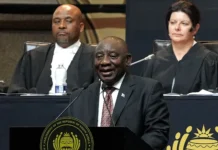Brazil’s Pelé, the world’s first football star and genius striker who revolutionized the game of football, died at the age of 82 after battling cancer for more than a year, one of his friends announced on Thursday.
An all-around footballer with a special talent, Pelé won fans across all continents of the world. He played a crucial role in the rise of football to the position of most popular sport on the planet.
Pelé was born in Tres Coracoes, in the state of Minas Gerais, on October 23 1940. He was named after the inventor of the light bulb, Thomas Edison, however when his birth was registered, the clerk removed the letter “i”, making his name Edson.
The nickname Pelé emerged when a young Edson couldn’t pronounce the name of goalkeeper Bilé, who played in his hometown. He would always say Pelé. At first, his teammates would make fun of the mispronunciation, without realizing how iconic that nickname would become in the future.
He signed his first professional contract at the age of 15, with Santos, the club with which he piled up titles, notably lifting two consecutive intercontinental cups, against Benfica (1962) and AC Milan (1963).
In 1956, he began playing for Santos, the team that launched him into stardom. In the 1958 World Cup in Sweden, he became the youngest-ever world champion at 17 years old, scoring in the final.
Pelé was also part of the team that won the World Cup in 1962, and became a two-time club world champion with Santos. He scored 77 goals for Brazil, a record he shares with Neymar. In 1970, he became the first – and still only – player to win three World Cup titles, as part of a squad regarded as one of the greatest teams in the history of sports.
On November 19, 1969, when he scored the thousandth goal of his career in the legendary Maracana stadium in Rio de Janeiro, the match was interrupted for about twenty minutes, the time of an interminable lap of honour.
In the late 1970s, Pelé played in the USA for New York Cosmos, before retiring in 1977. He continued to be involved in sport, working as a pundit on television and serving as Minister for Sports in Brazil between 1995 and 1998.
Over the past few years, Pelé fought a long battle with a cancer that was first detected in the colon and spread to several organs, including his liver and lung.
The announcement of his death was a shock for all football fans, eleven days after the end of the World Cup in Qatar, and just over two years after that of Argentine legend Diego Maradona.
Throughout the tournament, the “king” had sent messages on social media from the room of the Albert-Einstein hospital where he had been admitted on November 29, encouraging Brazil or congratulating Messi on his “deserved” coronation when Argentina beat France.
At Christmas time, his daughters posted photos of the almost-entire family gathered around the footballing legend on Instagram, expressing their gratitude as messages of support poured in from around the world.
Last Friday, Kely Nascimento published a moving photo of her tenderly hugging her father lying in his hospital bed. We only saw part of Pelé’s face in this photo, as he was wearing nasal cannulas to help him breathe.
The only men’s football player to have won three FIFA World Cup titles (1958, 1962 and 1970), the Brazilian was one of the most prominent sporting figures of the 20th century. His talent turned the Brazilian Selecao and its yellow shirt into global brands.
His reign also extended outside the field, with film roles, recorded songs and even a post as Minister of Sports (1995-1998).














